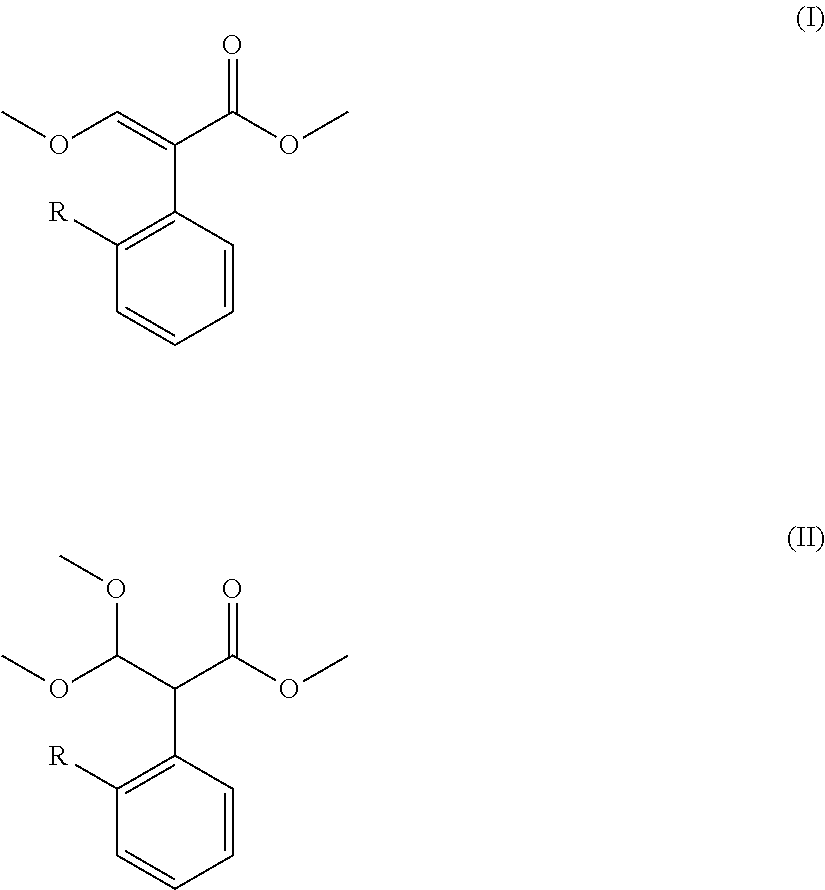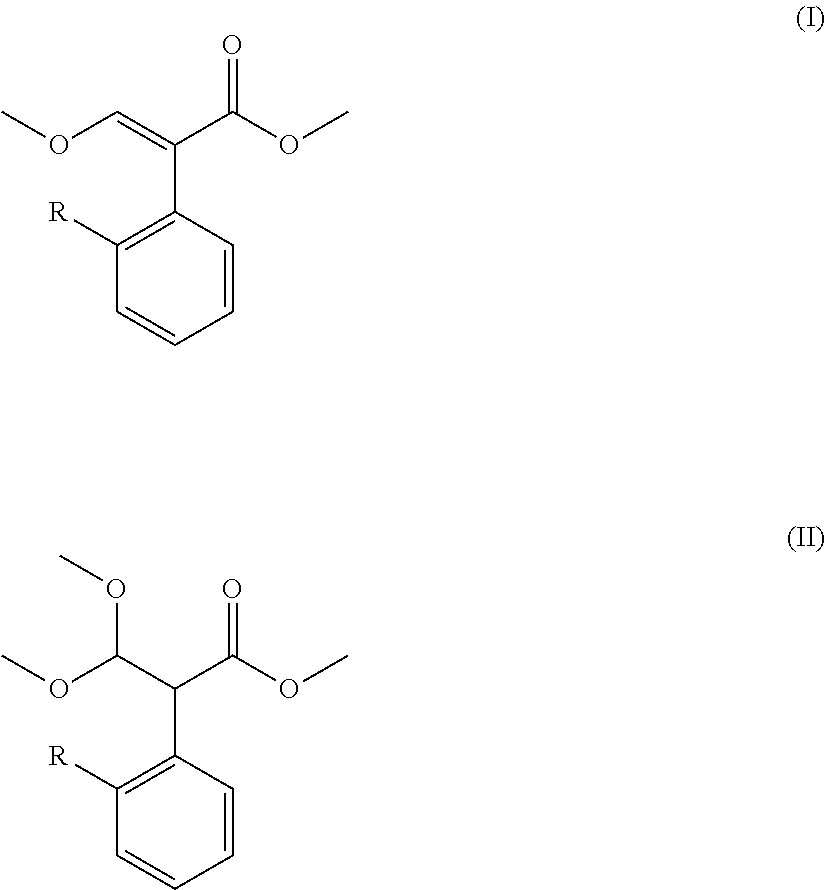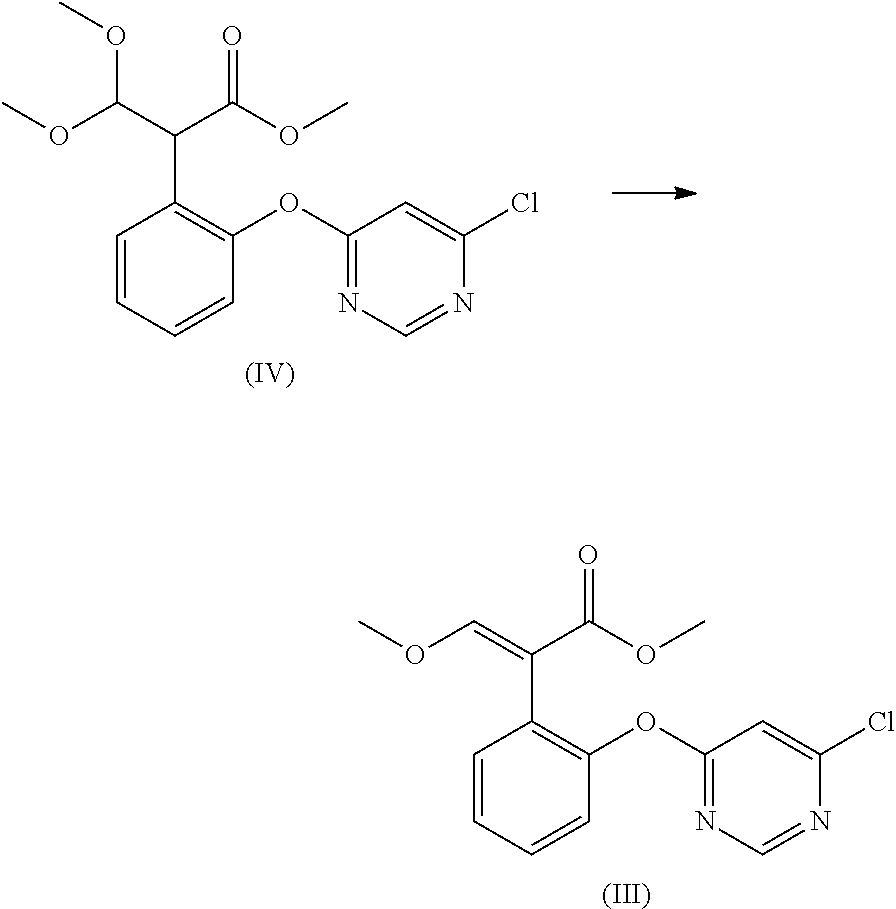Preparation method for acrylate compound
a technology of acrylate compound and preparation method, which is applied in the preparation of carboxylic acid esters, chemical instruments and processes, organic chemistry, etc., can solve the problems of affecting the reaction selectivity, so as to avoid the degradation of the conversion ratio and selectivity resulted from the introduction of acid anhydride. , the effect of reaction selectivity and high conversion ratio
- Summary
- Abstract
- Description
- Claims
- Application Information
AI Technical Summary
Benefits of technology
Problems solved by technology
Method used
Image
Examples
examples 1-11
[0038]The examples 1-11 are to describe the preparation method for acrylate compound provided in the present invention.
[0039]
TABLE 1Mole Ratio(I)(II)of CompoundTemperaturePressureTimeNo.RCatalyst(mol)(mol)II to Catalyst(° C.)(kPa)(min.)Example 16-chloropyrimidinyl-4-oxyDimethyl sulfate0.050.141:0.0611050105Example 26-chloropyrimidinyl-4-oxyDimethyl sulfate0.040.141:0.021002090Example 36-chloropyrimidinyl-4-oxyDimethyl sulfate0.070.141:0.1 12080120Example 46-chloropyrimidinyl-4-oxyDimethyl sulfate0.0350.14 1:0.005901560Example 56-chloropyrimidinyl-4-oxyDimethyl sulfate0.090.141:0.2 145100240Example 66-chloropyrimidinyl-4-oxyDiethyl sulfate0.050.141:0.6 11050105Example 76-chloropyrimidinyl-4-oxyMethanesulfonic acid0.050.141:0.0611050105Example 86-chloropyrimidinyl-4-oxyp-toluenesulfonic0.050.141:0.0611050105Example 96-(2-cyanophenoxy)pyrimidinyl-Dimethyl sulfate0.050.141:0.06110501054-oxyExample 10ChloromethylDimethyl sulfate0.050.141:0.0611050105Example 112-((6-(trifluoromethyl)pyrid...
example 12
[0042]Prepare the acrylate compound according to the method described in example 1, the difference is that add 0.14 mol methyl benzene as the solvent into the reaction mixture. After the reaction is completed, first, remove the solvent by vacuum distillation; then, add ethyl acetate and water for washing, after stratification, condense the organic phase to a dry state, and add methanol into the residue so that the product can recrystallize; then, filter to obtain the target product. Measure the conversion ratio and selectivity of the reaction. The result is shown in Table.
PUM
| Property | Measurement | Unit |
|---|---|---|
| pressure | aaaaa | aaaaa |
| temperature | aaaaa | aaaaa |
| temperature | aaaaa | aaaaa |
Abstract
Description
Claims
Application Information
 Login to View More
Login to View More - R&D
- Intellectual Property
- Life Sciences
- Materials
- Tech Scout
- Unparalleled Data Quality
- Higher Quality Content
- 60% Fewer Hallucinations
Browse by: Latest US Patents, China's latest patents, Technical Efficacy Thesaurus, Application Domain, Technology Topic, Popular Technical Reports.
© 2025 PatSnap. All rights reserved.Legal|Privacy policy|Modern Slavery Act Transparency Statement|Sitemap|About US| Contact US: help@patsnap.com



